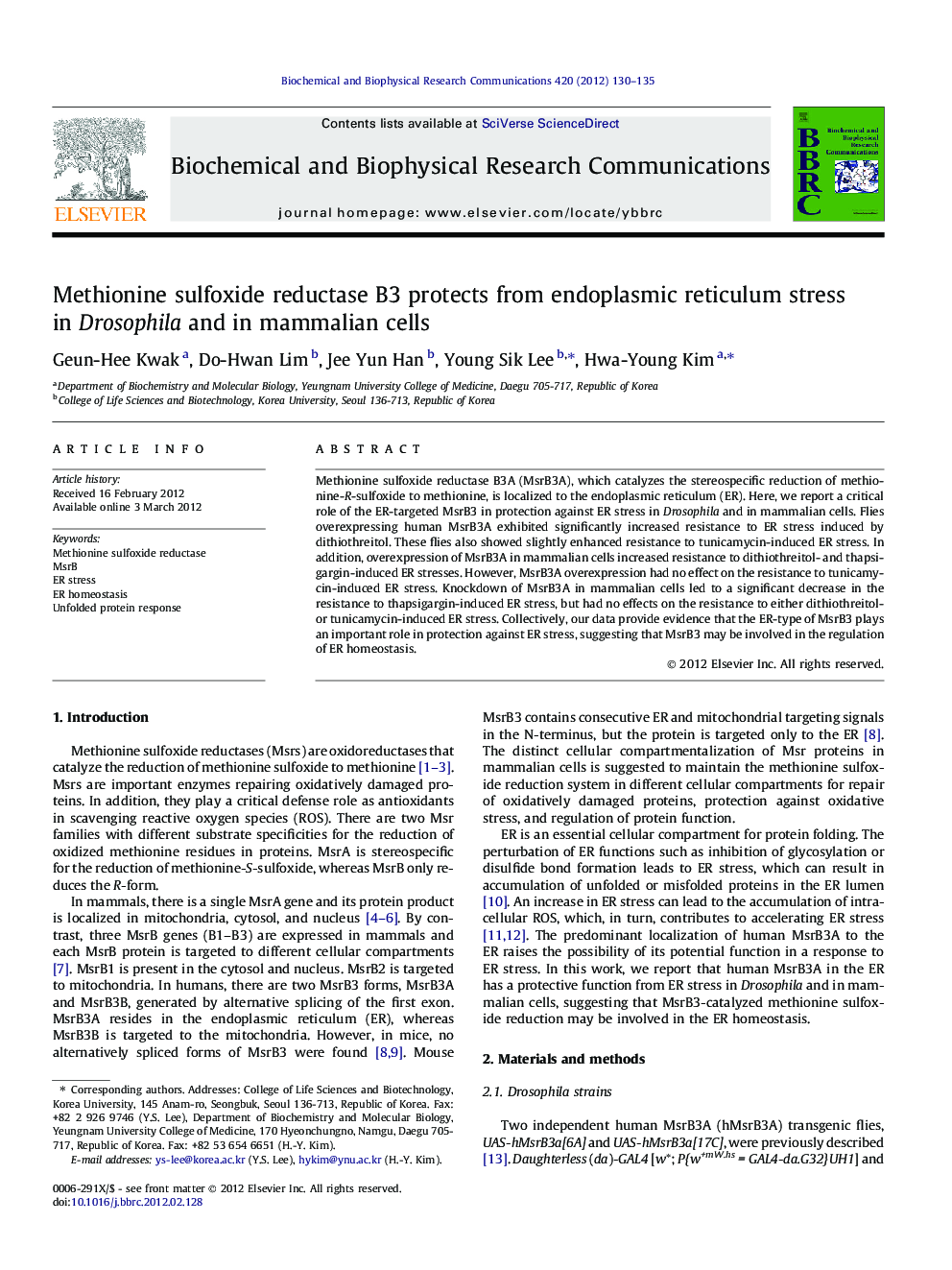| Article ID | Journal | Published Year | Pages | File Type |
|---|---|---|---|---|
| 1929857 | Biochemical and Biophysical Research Communications | 2012 | 6 Pages |
Methionine sulfoxide reductase B3A (MsrB3A), which catalyzes the stereospecific reduction of methionine-R-sulfoxide to methionine, is localized to the endoplasmic reticulum (ER). Here, we report a critical role of the ER-targeted MsrB3 in protection against ER stress in Drosophila and in mammalian cells. Flies overexpressing human MsrB3A exhibited significantly increased resistance to ER stress induced by dithiothreitol. These flies also showed slightly enhanced resistance to tunicamycin-induced ER stress. In addition, overexpression of MsrB3A in mammalian cells increased resistance to dithiothreitol- and thapsigargin-induced ER stresses. However, MsrB3A overexpression had no effect on the resistance to tunicamycin-induced ER stress. Knockdown of MsrB3A in mammalian cells led to a significant decrease in the resistance to thapsigargin-induced ER stress, but had no effects on the resistance to either dithiothreitol- or tunicamycin-induced ER stress. Collectively, our data provide evidence that the ER-type of MsrB3 plays an important role in protection against ER stress, suggesting that MsrB3 may be involved in the regulation of ER homeostasis.
► Overexpression of MsrB3A in Drosophila increases resistance to ER stress. ► The MsrB3A overexpression enhances ER stress resistance in mammalian cells. ► Knockdown of MsrB3 in mammalian cells leads to increased sensitivity to ER stress. ► MsrB3 in the ER may be involved in regulation of ER homeostasis.
